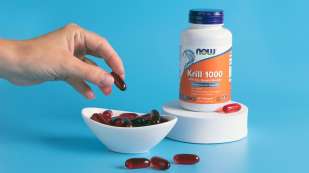Use coupon code MOISTURIZER with your purchase of $40 or more for a free†
Blemish Clear MoisturizerEchinacea Species And Their Active Ingredients

Echinacea's multiple applications
Echinacea herbal products have been traditionally used for the support of immune system health.* In fact, echinacea has become one of the most widely used herbal products and dietary supplements in Europe, North America, and Australia.
The parts of echinacea used in traditional herbal systems are the roots and aerial parts of three species: Echinacea purpurea, Echinacea angustifolia and Echinacea pallida. The main active compounds of echinacea are caffeic acid derivatives (phenolic compounds), alkamides and polysaccharides. Among caffeic acid derivatives, several components, such as caftaric acid, chlorogenic acid, caffeic acid, echinacoside and cichoric acid, are identified from echinacea extracts. Cichoric acid is the major phenolic compound in E. purpurea, but minor in E. angustifolia and E. pallida. Echinacoside is the main phenolic compound in E. angustifolia and E. pallida, but only trace is found in E. purpurea.
Echinacea research
Studies have shown that cichoric acid can help to support proper immune system responses and possesses free radical-neutralizing properties.* Recently, it has been found that it may support the body’s healthy response to immune system challenges.* Echinacoside does not contribute its effects on the immune system, but it helps to scavenge free radicals and supports the body’s own natural healing activities.*
The pharmacological activity of each echinacea species appears to reflect the slight variation in the amount of active ingredients and their chemical profiles. Preliminary studies indicate that all three echinacea species may help support joint health in the face of free radical-induced stressors, which is probably due to its polyphenolic compounds.* Extracts of E. purpurea roots have greater free radical-scavenging capacity than those of E. pallida or E. angustifolia due to more amounts of phenolics constitute found in E. purpurea. E. purpurea is also well known for its support of the body’s natural immune system responses to typical challenges due to its high cichoric acid content.*
Dietary supplement preparations of echinacea are primarily based on the extracts or juices from their roots, leaves, stems and flowers. In echinacea supplements the active ingredients in recommended amounts depend upon the quality of plant material, preparation procedures, formulations and storage conditions. These active ingredients, especially phenolic acids, are mainly responsible for the biological activities of echinacea extracts and plant materials. Therefore, the profile of their content represents a useful fingerprint to define the identity and the quality of these products.
Quality processing
To ensure the quality of products, it is important to have reliable and practical analytical methods for the determination of phenolic acids in complex natural matrices. It is also a necessary step to clearly identify the different species of echinacea to distinguish the efficacy of the different plants and their parts for a proper usage.
Phenolic compounds of echinacea have been studied with several analytical techniques, such as HPTLC, UV and HPLC. To standardize echinacea products, NOW has developed an HPLC method based on official U. S. Pharmacopeia method. This method validates the analytical procedures used for the determination of total phenolics in echinacea products. This analytical method is accurate, efficient and simultaneously determines typical levels of various phenolic compounds, ensuring the quality of NOW® echinacea products.
*These statements have not been evaluated by the Food and Drug Administration. These products are not intended to diagnose, treat, cure or prevent any disease.











